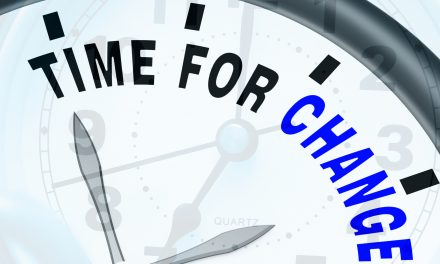
Sensory Processing Disorder and the Pediatric Chiropractic Office

Approximately 5 to 16 percent of children in the U.S. are diagnosed with Sensory Processing Disorder (SPD), and only one percent of children in the U.S. are diagnosed with Autism Spectrum Disorder (ASD). 90 percent of children with ASD will also show symptoms of concurrent SPD. Due to the growing awareness of these sensitivities in children, combined with our increased demand on American children from overstimulation of their environment with technology, lifestyle, activities and online social interactions, the chiropractic physician will benefit from a compassionate understanding of SPD and ASD patients.
Sensory Processing v. Autism
Sensory Processing Disorder is the subject of some controversy because it is not listed in the DSM V that psychologists and psychiatrists use to formally diagnose their patients. Regardless, many physicians and specialists recognize the differences between SPD and ASD. In a research study at the University of California San Francisco[i], researchers studied MRIs in ASD and SPD children to examine the white matter tracts in the brain of SPD and autistic children. In this study, both the SPD and ASD groups showed decreased connectivity in multiple parieto-occipital tracts, which are the tracts that handle sensory information sent to the back of the brain. Only the autism group showed weakness in the inferior fronto-occipital fasciculi, inferior longitudinal fasciculi, fusiform-amygdala and the fusiform-hippocampus tracts related to the social-emotional process. This differentiation between the ASD and SPD group explains the autism symptom of difficulty with interpretation of official expressions and social interactions, which is not found in SPD children.
Sensitivities
Children with SPD have a difficult time adapting to the environment, and the sensitivity can include noise, touch, taste, or movement. These sensitivities may change from day to day. One morning every piece of clothing may irritate a child, and the next day the child does not react, or noise may cause the child to “meltdown” one moment, and the next moment the noise produces no response. The parents may be in a constant battle to figure out how to help their children in settings that change daily.
In the chiropractic practice, it is imperative to get a detailed history for the child with diagnosed or suspected ASD or SPD. This history should review the mother’s prenatal history, birth history, and general health history. It is important to interact with your pediatric patients on their level, sometimes sitting on the ground or squatting down to interact with what they are doing at that moment. During this interaction, you are adding to your history and observation. If a child has a tough time staying in the consultation room, you may need to abbreviate your wait time for these visits or allow a play area where you can sit with the patient and the parents. The examination will include palpation, visualization, posture analysis, neurological and orthopedic testing, and spinal x-rays as needed. These exams may include the staff helping by taking notes or reading to the child, as you and the parent can work together to gather your information and exam findings. Holding deep pressure on the top of the head or lateral arms prior to light touch during palpation can help calm the sensitive patient. You may also give the child a toy or textured ball to hold during the exam.
Chiropractic Treatment
A written report of findings and treatment plans should be delivered to both parents in a quiet environment. Chiropractic spinal adjustments allow better brain and body functioning and may greatly help neurodevelopmental conditions such as ASD and SPD. Many sensory-challenged children enjoy the adjustments, as touch is calming and gets better input into the nervous system. Teachers and other professionals including Psychiatrists, Occupational Therapists, Speech Therapists, Physical therapists, Neurologists, Psychologists, and Pediatricians may be a part of your health care team. You may also spend extra time educating on nutrition, along with spinal health, during your visits. The benefit of working well with other professionals is hearing how much of a difference they see with their care when the child is also getting chiropractic care.
Following a routine during your regular visits is important to your Sensory Processing Disorder or ASD patient. This may include using the exact same technique, in the same order with the same explanation, providing a similar type of sticker each visit, staying with the same adjusting room or keeping the lights dim or off during a visit. You may find yourself providing a cup of popcorn every visit to a child that remembers you had snacks on his or her first visit. You also may adjust a squirmy toddler while mom is babywearing for deep pressure, or you may need to allow a child to be adjusted in the play area on a small waiting bench. You may also need to be quick with your adjustment, because patient focus may be limited. Distraction, deep pressure, and routine are the keys to a successful pediatric visit.
Conclusion
The prognosis for a child with ASD or Sensory Processing Disorder can range from excellent, where the child outgrows and adapts to sensitivities, to a lifelong disorder. When working with these children, you can be an encourager for their families, as the daily talks can be exhausting and overwhelming. Sometimes a kind word for the child, sibling or parents can go a long way in a family that is just getting through each day. Celebrating small wins for their child makes a big difference. Sometimes, just watching a child interact in your office with other kids can be a big change for the family.
The joy of helping children with sensory processing disorder will far outweigh the patience needed in caring for them in your practice. Chiropractic can improve their days significantly by increasing motor skills and managing emotional reactions, resulting in better reports from school and home. If you are not comfortable working with children in your practice, consult a pediatric chiropractic physician in your area or participate in pediatric continuing education with an approved continuing education sponsor.
[i] Julia P. Owen, Elysa J Marco, Shivan Desari, Emily Fourie, Julie Harris, Susanna S. Hill, Anne B. Arnett, Pratik Mukherjee.2013. Abnormal White Matter Microstructure in Children with Sensory Processing Disorder. Neuro Image: Clinical Vol 2: 844-853

















